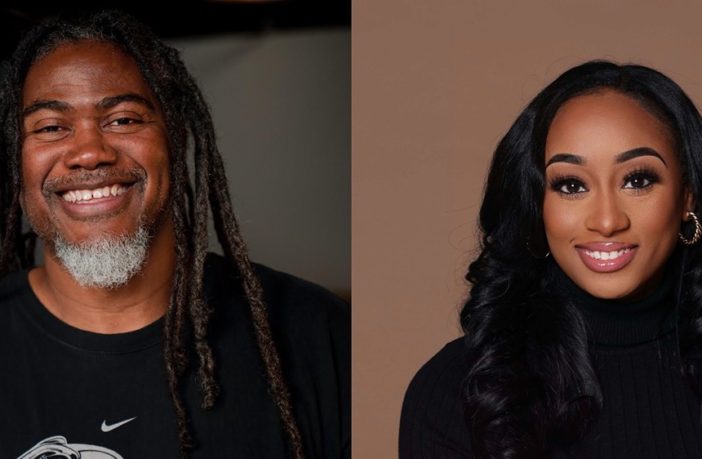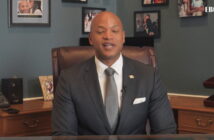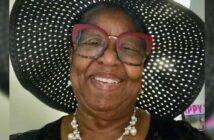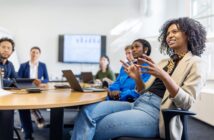Are you a poet who drops dope rhymes? A graffiti artist whose tags are fire? Then you have the skills to enter the exciting world of advertising.
Where Are All The Black People, the diversity conference and career fair that brings advertising opportunities to life for its attendees, returns virtually on October 26 and in person in New York City on October 27, 2023.
Part of the D&I initiative of The One Club for Creativity, a non-profit organization that empowers the global creative community, the two-day event is designed to help students, recent graduates and people interested in advertising get real-world insight about the industry.
“The One Club was created in the 1960s to celebrate and support the global creative community, specifically advertising. We have several pillars, including education, creative development and D&I, to help creatives learn about the industry and upskill,” says Adrienne Lucas, The One Club’s head of diversity and partnerships and the event’s director. “Where Are All The Black People is The One Club’s largest annual D&I initiative, designed to help increase the pipeline of Black creatives into the industry.”
Veteran advertising executive Jimmy Smith, who was the first Black creative director at Wieden+Kennedy and is on The One Club’s board of directors, is co-founder of Where Are All The Black People.
“When you were coming up in my generation, you would be the only Black person [at an agency]. And oftentimes, it’s no big deal to be the only Black person in an ad agency to this day.” Where Are All The Black People aims to change that.
Here, Lucas and Smith share more about the upcoming event and how you can register and be a part of the event.
EBONY: How did Where Are All The Black People come into being?
Jimmy Smith: I co-founded it with Jeff Goodby of the renowned advertising agency Goodby Silverstein & Partners. We were doing a white paper to determine the issues and problems of getting more Blacks into advertising. We were in that meeting—and I’ll never forget—Mike Hughes, a leader in the industry at the time, said, “Jimmy, I’d hire more Black people if I could just find them.” Rather than get mad, I told him, “Mike, I’m gonna help you find some more Black people.”
Around the same time, Ed Crayton, who was Black, was at a Christmas party with Jeff, who had a beer in his hand. Ed walked up to him and said, “Hey, Jeff. Where are all the Black people?” Jeff was like, “that’s that’s a good question.” So he called up The One Club and me. He told me his story; I told him mine. The One Club got involved and has been carrying the torch ever since.
Image: courtesy Christian Rodriguez for Margarita Corporan Photography.
What can attendees expect at the conference?
Adrienne Lucas: When COVID hit, we pivoted to a virtual format. So many people from different countries, like Nigeria, South Africa and Canada, tuned in, and we decided to keep the virtual day. Thursday, October 26, happens online and focuses on portfolio reviews and recruiting. Friday is the full-blown in-person conference in New York City. Anyone who is a current student, a recent graduate or immediately looking for employment attends this event for free; we want no economic barrier to entry. Anyone attending to network for their company or schmooze pays a nominal fee of $60.
It starts with a free breakfast, followed by our keynote speaker, Everette Taylor, CEO of Kickstarter. After that, there are different pathways that people can take. We do portfolio reviews to help people upskill and get feedback from seasoned creatives. It operates like speed dating, so you never know who you will sit with. We have a recruiting fair with 50 different companies including Capital One, Google Creative Lab, Verizon and more, and all these companies are hiring talent in real time. We have panels about mental health and career advice.
And we have a wellness room. I launched it last year because I knew returning to an in-person format might be anxiety-inducing for some people who were used to being quarantined. You can drop into the wellness room anytime and do breathing exercises or sit silently. Two Black women facilitate the room. I believe in the “work hard, play hard” mindset, so the day ends with a party hosted by Brown Sugar Bounce. They are advertisers by day and DJs by night. We keep it all the family; even those who run our wellness room work in advertising.
Is the event just for those with an advertising education or background?
Smith: It’s not just for folks who want to get into advertising or are already in advertising. We’ve invited graffiti artists, poets, rappers and anybody with creative and tech skills. This industry is starving for us. Years back, a black horse would appear if you typed “black beauty” in a search engine. The tech part of this is in the coding and who’s putting in black beauty for Black women and bringing our culture so that it’s authentic. I don’t want people to think, “Oh, I’m not a copywriter. I’m not an art director.” Are you a graffiti artist? Well, then, you are a designer. Do you write poetry? You’re a writer. Come and we’ll find a place for you. Agencies will be looking for that type of talent.
Lucas: And advertising can be surprisingly lucrative. Many parents might fear that if their child works in the creative industry, they’ll be a starving artist. That is not true. You can be a creative and make more money than doctors and lawyers. It’s about having the skill set and being willing to develop them further. It’s important for people to know that. You can make good money in this industry.
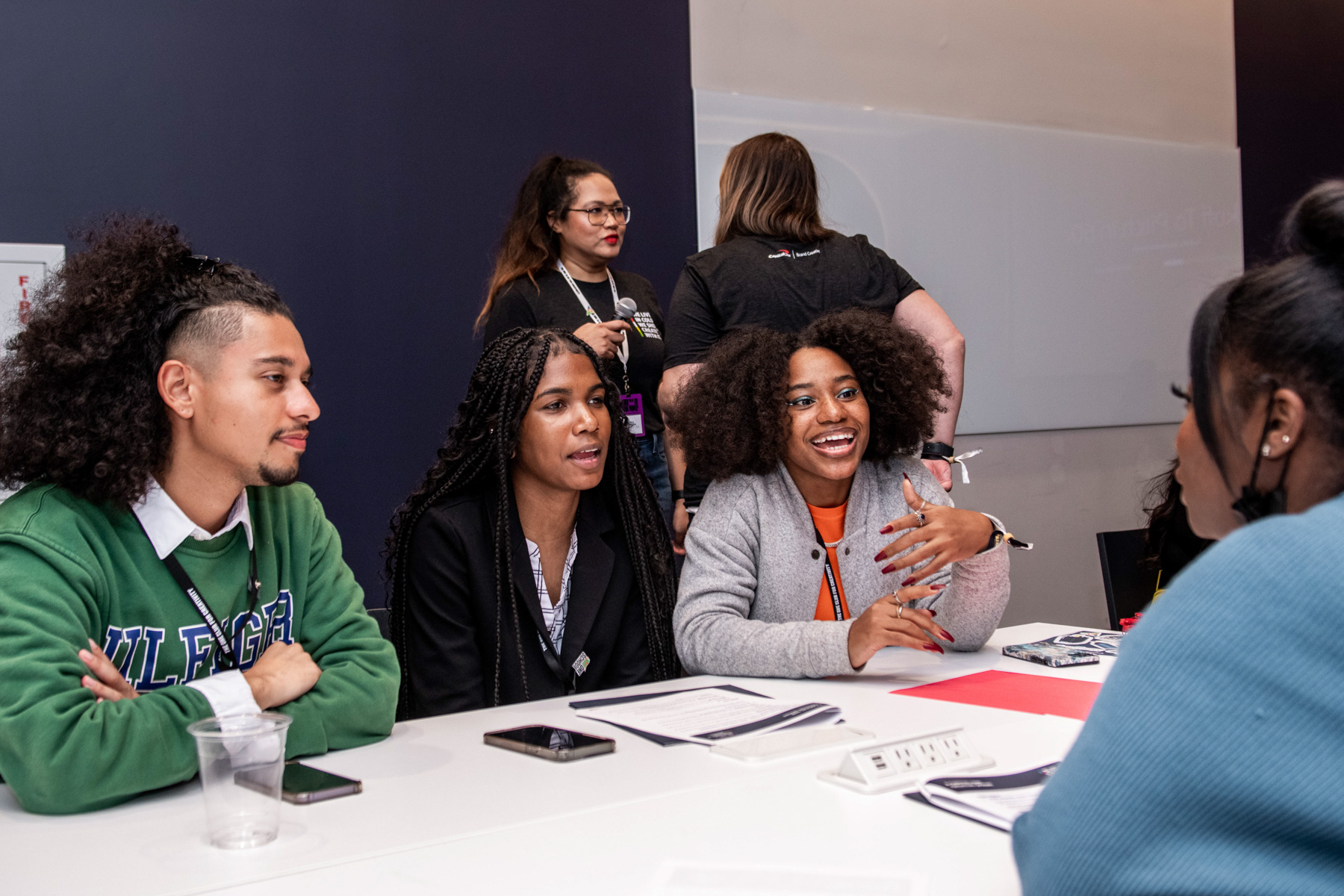 Image: Christian Rodriguez for Margarita Corporan Photography.
Image: Christian Rodriguez for Margarita Corporan Photography.
How important is it for creatives to have this access and opportunity?
Smith: The value of this event is incredible. Back in the day, there was no Internet, no Zoom, nothing like that. Nobody knew what anybody looked like, right? You had to send your portfolio via FedEx. I sent it to Campbell Ewald, and my name is Jimmy Smith. An internal headhunter called and told me that they had a job and they wanted to get me in the next day to meet the creative director before he went on vacation. My wife and I had to get up at 4 a.m. to drive from Muskegon, Michigan, to Detroit by nine. We got there, and the headhunter, a white woman, was flipping through my portfolio, but she had already seen it. I thought she was buying time for the creative director, but my meeting was wrapping up. I asked, “When am I meeting the creative director?” And she responded, “You aren’t meeting the creative director. Oh, no, no, I just wanted to meet you.” She had had no idea that I was Black.
That’s just one example of the many places I would interview where you rarely saw anyone of color. Thank God for Tom Burrell, Alma Hopkins and Lewis Williams, who brought me in and taught me the ABCs. So having Where Are All The Black People, these recruiters, internal headhunters and creative directors know there are no bones about it. You’re here to look at and find Black talent, no excuses.
Who can register for Where Are All The Black People?
Lucas: Anyone can sign up at any level of their career. If companies want to learn more about partnering with The One Club, they should also contact me, whether it’s for this year or for the future.
Register to attend Where Are All The Black People at www.waatbp.org.
